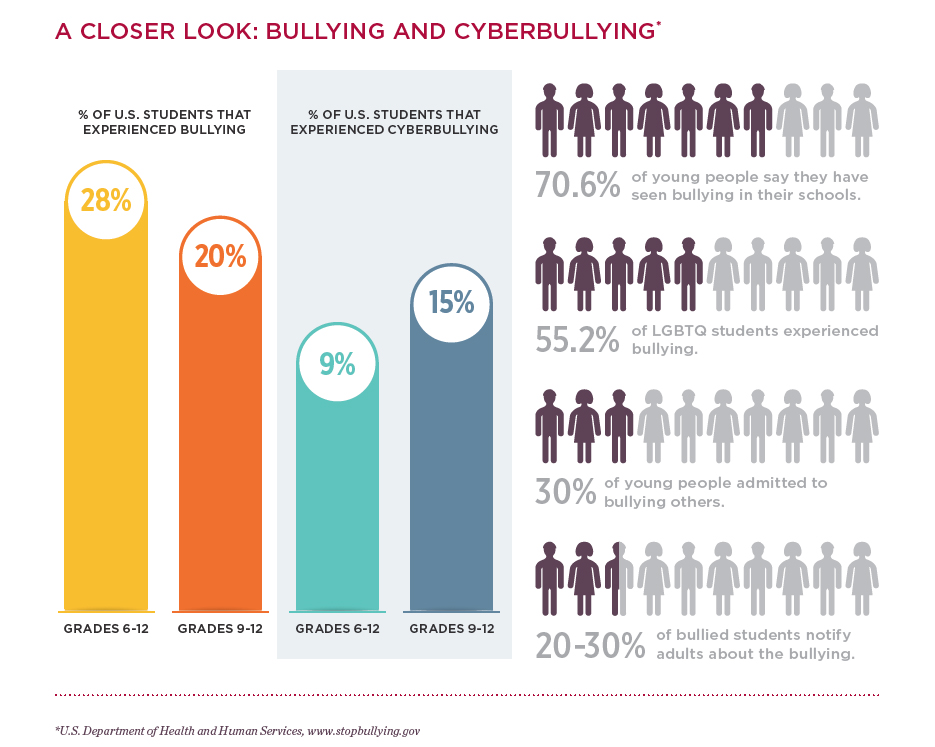Cedars-Sinai Blog
Dealing with Bullying: A Guide for Parents
May 27, 2019 Cedars-Sinai Staff

Bullying is a behavior that seeks to harm, intimidate, or coerce someone perceived as vulnerable. It can include actions such as making threats, spreading rumors, attacking someone physically or verbally, and excluding someone from a group on purpose.
Bullying is more than a buzzword. It's a serious, growing problem in schools across the country.
According to one report, as many as 28% of students in the US have experienced bullying at school.
What is bullying?
Bullying is unwanted, aggressive behavior that involves a real or perceived power imbalance.
This behavior is repeated and has potential to become worse over time. It can take place in person or online. Online bullying is known as cyberbullying.
Bullying and cyberbullying can include making threats, spreading rumors, physical or verbal attacks, and excluding someone from a group intentionally.
Bullying also includes bystander bullying, which is people watching and doing nothing to stop it.
What should parents look for?
If parents are concerned their kids are being bullied, they should look for these signs:
- Change in behavior and mood
- Anxiety
- Change in eating, sleeping, or hobbies
- Irritability
- Refusal to go to school or avoiding certain situations
In the Newsroom: Coping and Healing After Violence Invades A Community
What can parents do?
Talking to your kids about bullying is an important first step.
Discussing and defining bullying with your kids can help them understand the behavior when they see it.
"The more students understand bullying and how it affects themselves and others, the more they will be able to deal with it," says Suzanne Silverstein, founding director of the Cedars-Sinai Share & Care program.
The most important role for parents is to create a trusting environment where children feel safe expressing themselves and telling parents if they are bullied or observe bullying.
Encouraging open conversations can help your child to feel comfortable talking to you about their feelings. Casual conversation at dinner or during school drop-off/pickup is a perfect time to check in with your kids and talk about what's going on in their lives.
It's also helpful to create a plan for how to deal with bullying when they encounter it or see it.
Learning how to respond to bullying
You can teach your kids to respond in the following ways:
- Look at the bully and firmly tell them to stop in a calm, clear voice
- If in danger, walk away immediately and find an adult
- Talk to a trusted adult
- Speak up and don't be a silent witness to bullying
Parents can use these tactics to help combat bullying:
- Get involved in the school community by talking to parents, staff, and administrators to find out how you can help create a bully-free environment at school
- Foster self-esteem in your child
- Listen to your child and encourage open dialogue
- Offer positive reinforcement and praise for positive behavior

Share and Care is just one of the ways Cedars-Sinai is working toward a healthier Los Angeles. Learn more about our community benefit programs.


